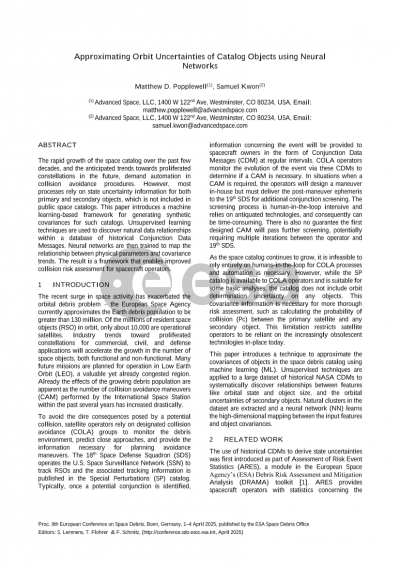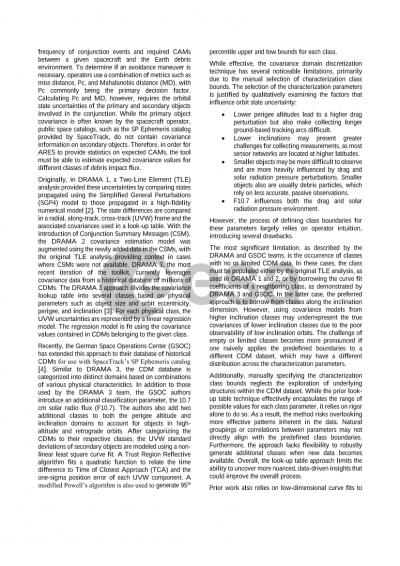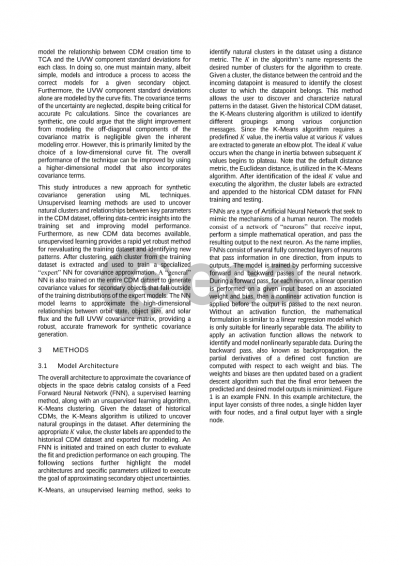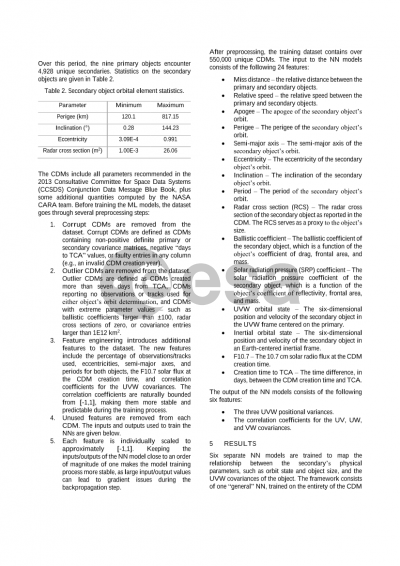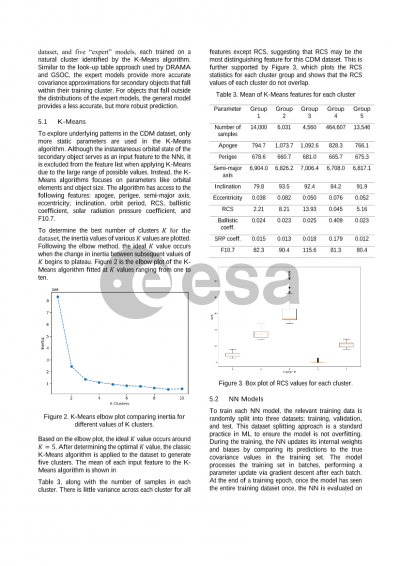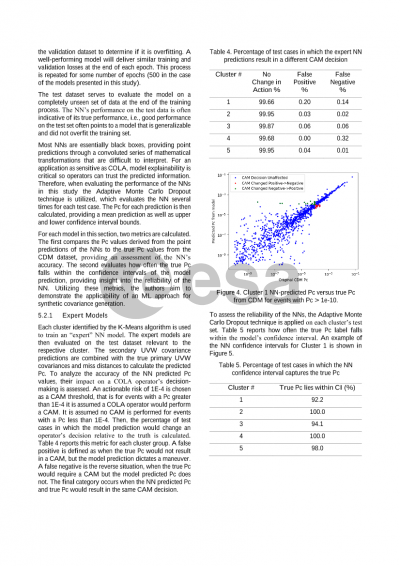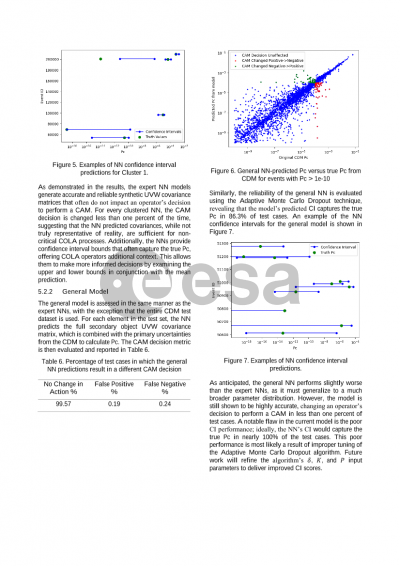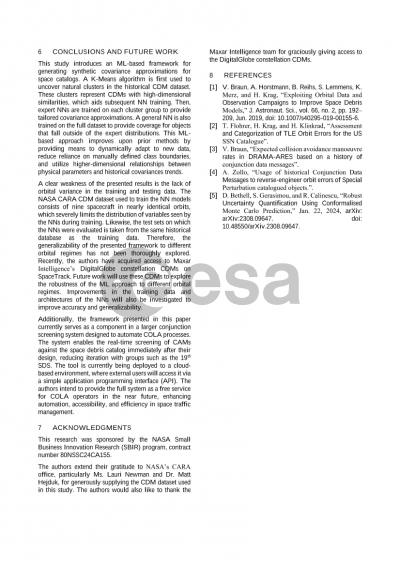Document details
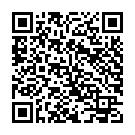
Abstract
The recent surge in space activity has exacerbated the orbital debris problem – the European Space Agency currently approximates the Earth debris population to be greater than 130 million. Of the millions of resident space objects (RSO) in orbit, only about 10,000 are operational satellites. Industry trends toward proliferated constellations for commercial, civil, and defense applications will accelerate the growth in the number of space objects, both functional and non-functional. Many future missions are planned for operation in Low Earth Orbit (LEO), a valuable yet already congested region. Already the effects of the growing debris population are apparent as the number of collision avoidance maneuvers (CAM) performed by the International Space Station within the past several years has increased drastically.
To avoid the dire consequences posed by a potential collision, satellite operators rely on designated collision avoidance (COLA) groups to monitor the debris environment, predict close approaches, and provide information necessary for planning avoidance maneuvers. The 18th Space Defense Squadron (SDS) operates the U.S. Space Surveillance Network (SSN) to track RSOs and the associated tracking information is published in the Special Perturbations catalog. Typically, once a potential conjunction is identified, information concerning the event will be provided to spacecraft owners in the form of Conjunction Data Messages (CDM) at regular intervals. COLA operators monitor the evolution of the event via these CDMs to determine if a CAM is necessary. In situations when a CAM is required, the operators will design a maneuver in-house but must deliver the post-maneuver ephemeris to the 19th SDS for additional conjunction screening. The screening process is human-in-the-loop intensive and relies on antiquated technologies, and consequently can be time-consuming. There is also no guarantee the first designed CAM will pass further screening.
As the space catalog continues to grow, it is infeasible to rely entirely on humans-in-the-loop for COLA processes and automation is necessary. However, while the SP catalog is available to COLA operators and is suitable for some basic analyses, the catalog does not include orbit determination uncertainty on any objects. This covariance information is necessary for more thorough risk assessment, such as calculating the probability of collision (Pc) between the primary satellite and any secondary object. This limitation restricts satellite operators to be reliant on the increasingly obsolescent technologies in-place today.
This paper introduces a technique to approximate the covariances of objects in the space debris catalog using machine learning (ML). Unsupervised techniques are applied to a large dataset of historical NASA CDMs to systematically discover relationships between features like orbital state and object size, and the orbital uncertainties of secondary objects. Natural clusters in the dataset are extracted and a neural network (NN) learns the high-dimensional mapping between the input features and object covariances. The use of historical conjunction data for synthetic covariance generation was introduced by Zollo et. Al., but the original application is limited to predefined clusters and low-dimensional curve fits. This study enhances their approach by using ML techniques to provide a more accurate and robust approach to synthetic covariance generation. When applied to an unseen testing dataset, the neural network models produce synthetic covariance matrices with errors of less than 4%. As an additional metric, for each test case the Pc is calculated using the NN-generated and true covariance matrices. In approximately 99% of the over 80,000 test cases, the results of the NN would not change an operator’s decision to perform a CAM.
The presented techniques provide a robust, accurate way to generate covariance information for use in COLA analyses, allowing spacecraft operators to increase the number of tasks that can be performed in-house. Furthermore, the methods enable the potential automation of COLA processes. For example, the authors have integrated the models into a full conjunction screening system that autonomously screens CAM against the space debris catalog immediately after their design.
Preview
